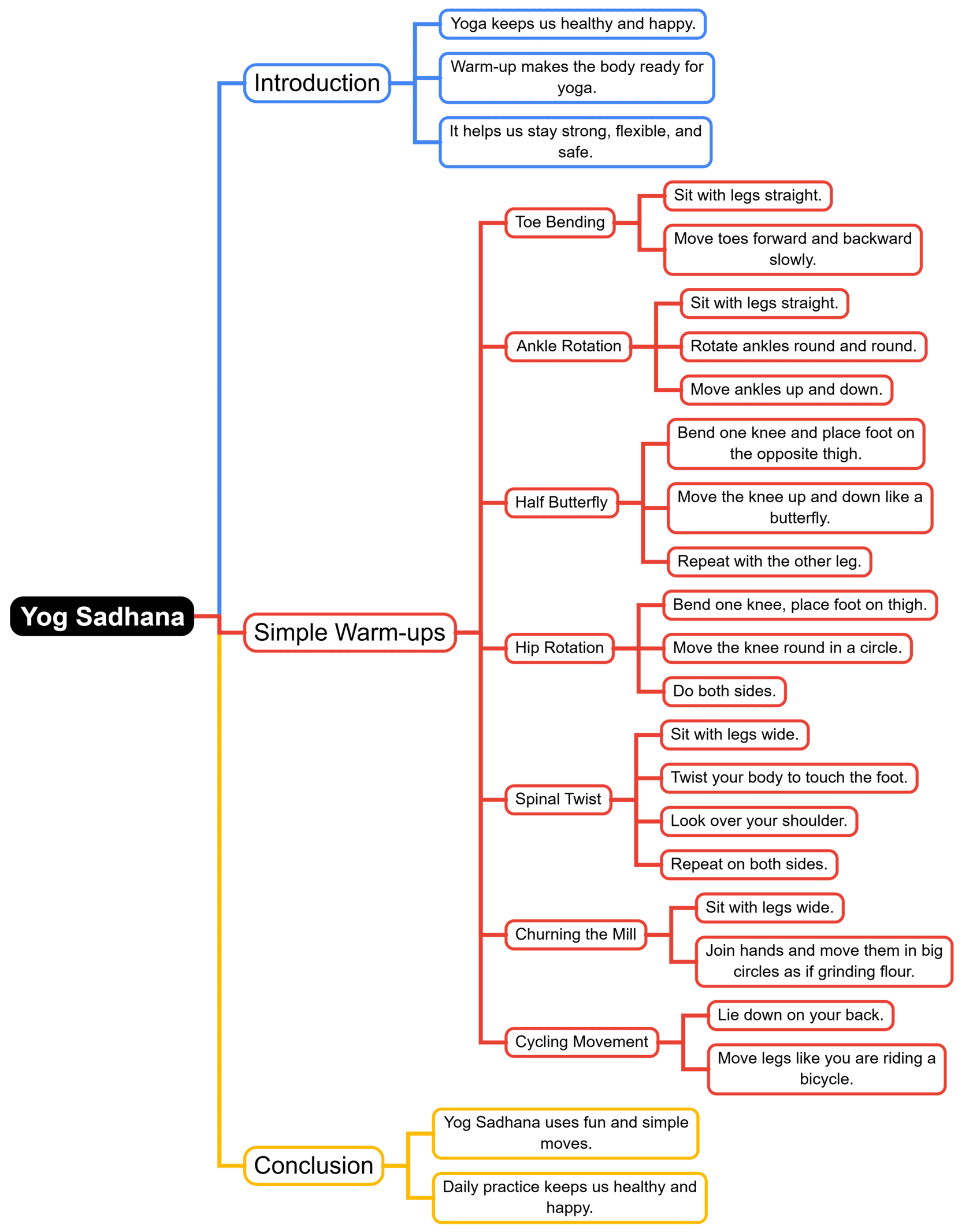Class 5 Exam > Class 5 Notes > Physical Education and Well Being (Khel Yoga) Class 5 > Mind Map: Yoga Sadhana
Mind Map: Yoga Sadhana | Physical Education and Well Being (Khel Yoga) Class 5 PDF Download

The document Mind Map: Yoga Sadhana | Physical Education and Well Being (Khel Yoga) Class 5 is a part of the Class 5 Course Physical Education and Well Being (Khel Yoga) Class 5.
All you need of Class 5 at this link: Class 5
FAQs on Mind Map: Yoga Sadhana - Physical Education and Well Being (Khel Yoga) Class 5
| 1. What is Yoga Sadhana and how does it differ from regular yoga practice? |  |
Ans.Yoga Sadhana refers to a dedicated spiritual practice that incorporates various elements of yoga, including asanas (postures), pranayama (breath control), meditation, and philosophical study. Unlike regular yoga classes that may focus primarily on physical postures for fitness, Yoga Sadhana emphasizes a holistic approach aimed at personal transformation and spiritual growth. It is often practiced with discipline and regularity, seeking deeper self-awareness and connection to one's inner self.
| 2. How can beginners start their Yoga Sadhana practice effectively? |  |
Ans.Beginners can start their Yoga Sadhana practice by setting aside a specific time and space for daily practice, even if it's just for a few minutes. It's important to begin with simple asanas and gradually incorporate pranayama and meditation techniques. Seeking guidance from experienced instructors or utilizing online resources can help in understanding the correct techniques and philosophies. Consistency and patience are key to developing a fulfilling practice.
| 3. What are the benefits of incorporating meditation into Yoga Sadhana? |  |
Ans.Meditation is a vital component of Yoga Sadhana, offering numerous benefits such as enhanced mental clarity, emotional stability, and stress reduction. It promotes mindfulness, allowing practitioners to cultivate greater awareness of their thoughts and feelings. Additionally, regular meditation can lead to a deeper connection with oneself, improved focus, and a sense of inner peace, which supports the overall goals of Yoga Sadhana.
| 4. Are there specific dietary guidelines one should follow while practicing Yoga Sadhana? |  |
Ans.While there are no strict dietary rules, many practitioners of Yoga Sadhana adopt a sattvic diet, which includes fresh, whole foods that are light and easy to digest. This may involve consuming fruits, vegetables, whole grains, nuts, and seeds while minimizing processed foods, excessive sugars, and stimulants. The focus is on nourishing the body to support the spiritual and physical aspects of the practice.
| 5. How does Yoga Sadhana contribute to one's overall well-being? |  |
Ans.Yoga Sadhana contributes to overall well-being by promoting physical health through increased flexibility and strength, mental clarity through mindfulness and meditation, and emotional balance through self-reflection and inner peace. This holistic approach fosters a sense of harmony within oneself and with the surrounding environment, leading to improved relationships, enhanced self-esteem, and a greater sense of purpose in life.
Related Searches




















